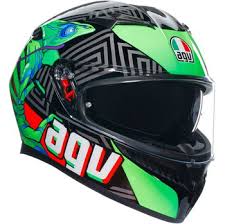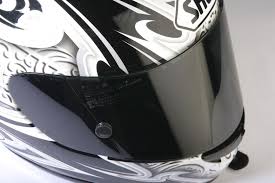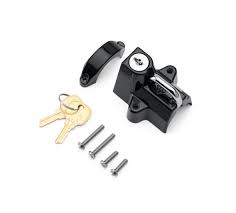Ensuring Helmet Safety: A Crucial Step for Motorcyclists
The Importance of Helmet Safety in Motorcycling
Motorcycle helmets are a critical piece of safety equipment for riders of all levels. Wearing a helmet is not just a legal requirement in many places, but it is also a crucial step in protecting yourself from serious head injuries in the event of an accident.
Studies have shown that wearing a helmet can significantly reduce the risk of head injuries and fatalities in motorcycle accidents. Helmets are designed to absorb and dissipate the impact energy during a crash, thereby reducing the force transmitted to the rider’s head and brain.
It is essential to choose a helmet that fits properly and meets safety standards. A well-fitted helmet should sit snugly on your head without being too tight or too loose. Make sure the chin strap is securely fastened to keep the helmet in place during a crash.
When selecting a helmet, look for certification labels such as DOT (Department of Transportation), ECE (Economic Commission for Europe), or Snell to ensure that it meets safety requirements. Avoid purchasing second-hand helmets or ones that show signs of damage, as they may not provide adequate protection.
Remember that wearing a helmet is not just about following the law; it’s about safeguarding your life and well-being on the road. Make it a habit to always wear your helmet whenever you ride, no matter how short the distance or how experienced you are as a rider.
Helmet safety should be a top priority for all motorcyclists. By investing in a quality helmet, maintaining it properly, and wearing it consistently, you are taking proactive steps to protect yourself and enjoy safe rides for years to come.
Seven Key Benefits of Helmet Safety: Ensuring Protection and Comfort on the Road
- Reduces the risk of head injuries in accidents
- Protects the skull and brain from impact
- Improves visibility by shielding against wind, debris, and weather
- Enhances rider confidence and comfort on the road
- Meets legal requirements for safe riding in many jurisdictions
- Provides insulation against noise and cold weather conditions
- Offers added protection during unexpected falls or collisions
Exploring the Drawbacks of Helmet Use: Comfort, Visibility, and Fit Challenges for Riders
- Helmet hair can be a common issue for riders, especially those with longer hair.
- Some riders may find helmets uncomfortable or restrictive, particularly during long rides.
- Helmet visors can fog up in certain weather conditions, affecting visibility on the road.
- Improperly fitted helmets may cause discomfort or pressure points on the rider’s head.
Reduces the risk of head injuries in accidents
Wearing a helmet while riding a motorcycle significantly reduces the risk of head injuries in accidents. Helmets are designed to absorb and dissipate impact energy, thereby minimizing the force transmitted to the rider’s head and brain during a crash. By wearing a helmet that meets safety standards and fits properly, riders can greatly enhance their protection on the road and reduce the severity of potential head injuries in case of an accident. Prioritizing helmet safety is a crucial step towards ensuring a safer riding experience for motorcyclists of all levels.
Protects the skull and brain from impact
Helmet safety is paramount in protecting the skull and brain from impact during motorcycle accidents. The design and construction of helmets are specifically engineered to absorb and dissipate the force of impact, reducing the risk of serious head injuries. By wearing a helmet that meets safety standards and fits properly, riders can significantly decrease the potential damage to their skull and brain in the event of a crash, highlighting the crucial role that helmets play in ensuring rider safety on the road.
Improves visibility by shielding against wind, debris, and weather
Helmet safety offers the significant advantage of enhancing visibility by providing a protective shield against wind, debris, and adverse weather conditions. By wearing a helmet while riding, motorcyclists can maintain clear vision and focus on the road ahead without distractions or impediments caused by external elements. This improved visibility not only enhances safety but also contributes to a more comfortable and enjoyable riding experience for riders of all levels.
Enhances rider confidence and comfort on the road
Wearing a helmet not only provides physical protection but also enhances rider confidence and comfort on the road. Knowing that you have an essential safety measure in place can boost your sense of security and allow you to focus more on enjoying the ride. A well-fitted helmet that meets safety standards can help reduce distractions and promote a smoother, more relaxed riding experience, ultimately contributing to a greater sense of confidence and comfort while navigating the roads.
Meets legal requirements for safe riding in many jurisdictions
Ensuring that your helmet meets the legal requirements for safe riding in many jurisdictions is a crucial advantage of helmet safety. By abiding by these regulations, riders not only protect themselves from potential fines or penalties but, more importantly, they significantly reduce the risk of serious head injuries in the event of an accident. Complying with legal standards regarding helmet safety demonstrates a commitment to responsible and law-abiding riding practices, ultimately contributing to a safer and more secure environment for all road users.
Provides insulation against noise and cold weather conditions
Wearing a helmet not only offers crucial protection in the event of an accident but also provides insulation against noise and cold weather conditions. A well-designed helmet can help reduce wind noise while riding, allowing for a more comfortable and focused experience on the road. Additionally, helmets with proper insulation can help keep riders warm during colder weather, ensuring a more enjoyable and safe ride in varying conditions. Prioritising helmet safety not only safeguards against head injuries but also enhances overall comfort and protection while riding.
Offers added protection during unexpected falls or collisions
Helmet safety offers added protection during unexpected falls or collisions, significantly reducing the risk of severe head injuries. In the event of a crash, the helmet acts as a crucial barrier between the rider’s head and potential impact forces, absorbing and dispersing energy to minimise trauma to the brain. By wearing a helmet consistently while riding, individuals can greatly enhance their safety on the road and increase their chances of avoiding life-threatening injuries in unpredictable situations.
Helmet hair can be a common issue for riders, especially those with longer hair.
Helmet hair can indeed be a common downside of helmet safety, particularly for riders with longer hair. The tight fit of a helmet can often cause hair to become flattened, tangled, or disheveled after a ride, leading to styling challenges once the helmet is removed. While helmet hair may be a temporary inconvenience for some riders, it is a small price to pay for the crucial protection that helmets provide against head injuries in the event of an accident. Properly securing your helmet and using hair ties or protective headgear can help minimise the effects of helmet hair while ensuring your safety on the road remains a top priority.
Some riders may find helmets uncomfortable or restrictive, particularly during long rides.
While helmet safety is crucial for protecting riders in case of accidents, some individuals may encounter discomfort or feelings of restriction when wearing helmets, especially on extended journeys. The added weight and snug fit of helmets can lead to heat buildup, pressure points, and reduced ventilation, which may contribute to discomfort for some riders. Despite these challenges, it is important for motorcyclists to prioritize their safety by selecting helmets that offer a balance between protection and comfort. Regular breaks, proper helmet adjustments, and choosing helmets with advanced ventilation systems can help mitigate these issues and ensure that riders remain safe and protected on the road.
Helmet visors can fog up in certain weather conditions, affecting visibility on the road.
In certain weather conditions, such as cold or humid environments, helmet visors have the tendency to fog up, posing a significant con to helmet safety. The fogging of visors can impair a rider’s visibility on the road, making it challenging to see clearly and react promptly to surrounding traffic or obstacles. This issue can increase the risk of accidents and compromise the overall safety of the rider. Riders must take precautions, such as using anti-fog treatments or ventilation systems, to mitigate this con and ensure clear visibility while riding.
Improperly fitted helmets may cause discomfort or pressure points on the rider’s head.
Improperly fitted helmets can pose a significant con in terms of helmet safety as they may lead to discomfort or pressure points on the rider’s head. A helmet that is too tight can cause headaches, restrict blood flow, and create an uncomfortable riding experience. On the other hand, a loose-fitting helmet may shift or come off during a crash, failing to provide adequate protection. Ensuring a proper fit is crucial to maximising both comfort and safety while riding, highlighting the importance of selecting and adjusting helmets carefully to minimise any potential discomfort or pressure points on the rider’s head.







